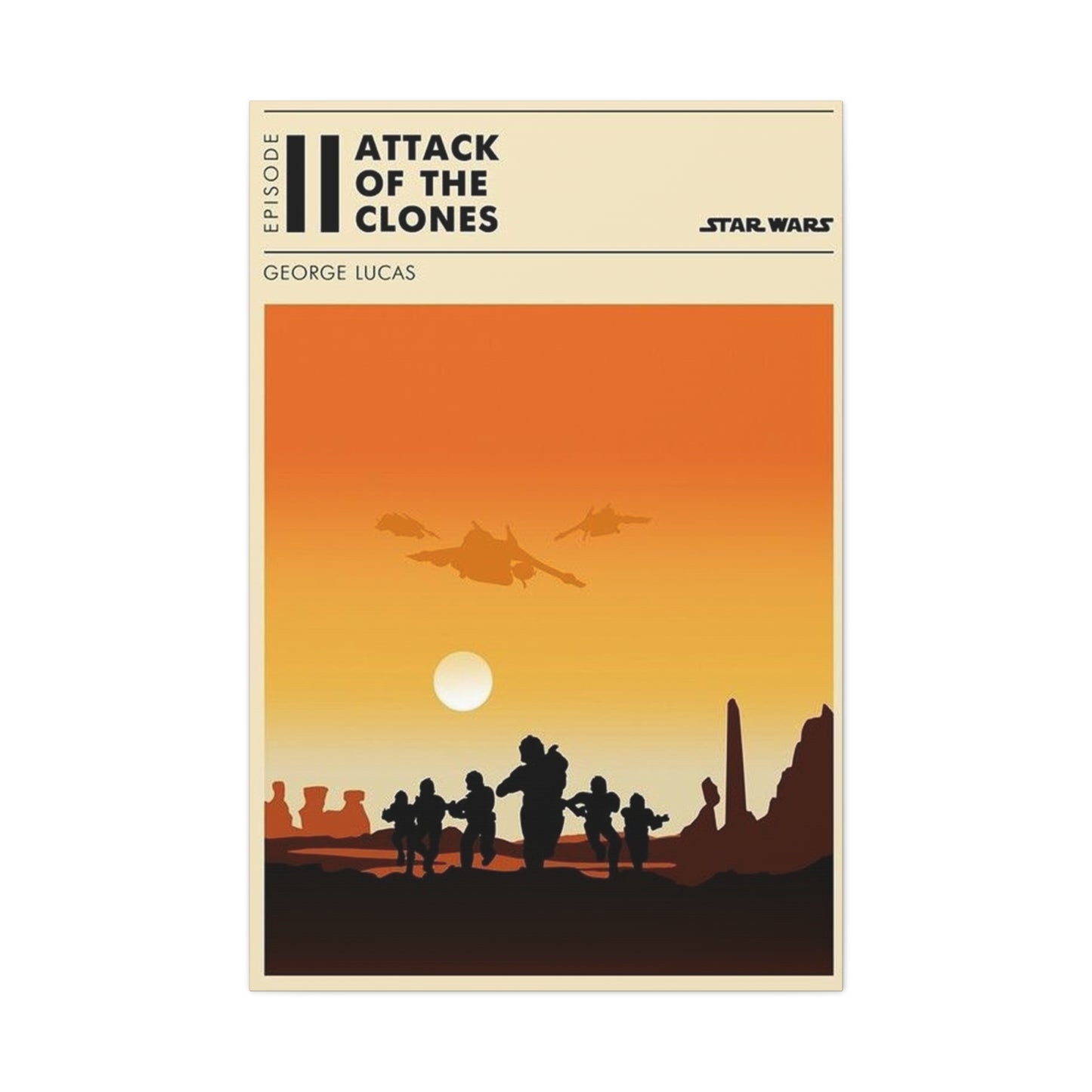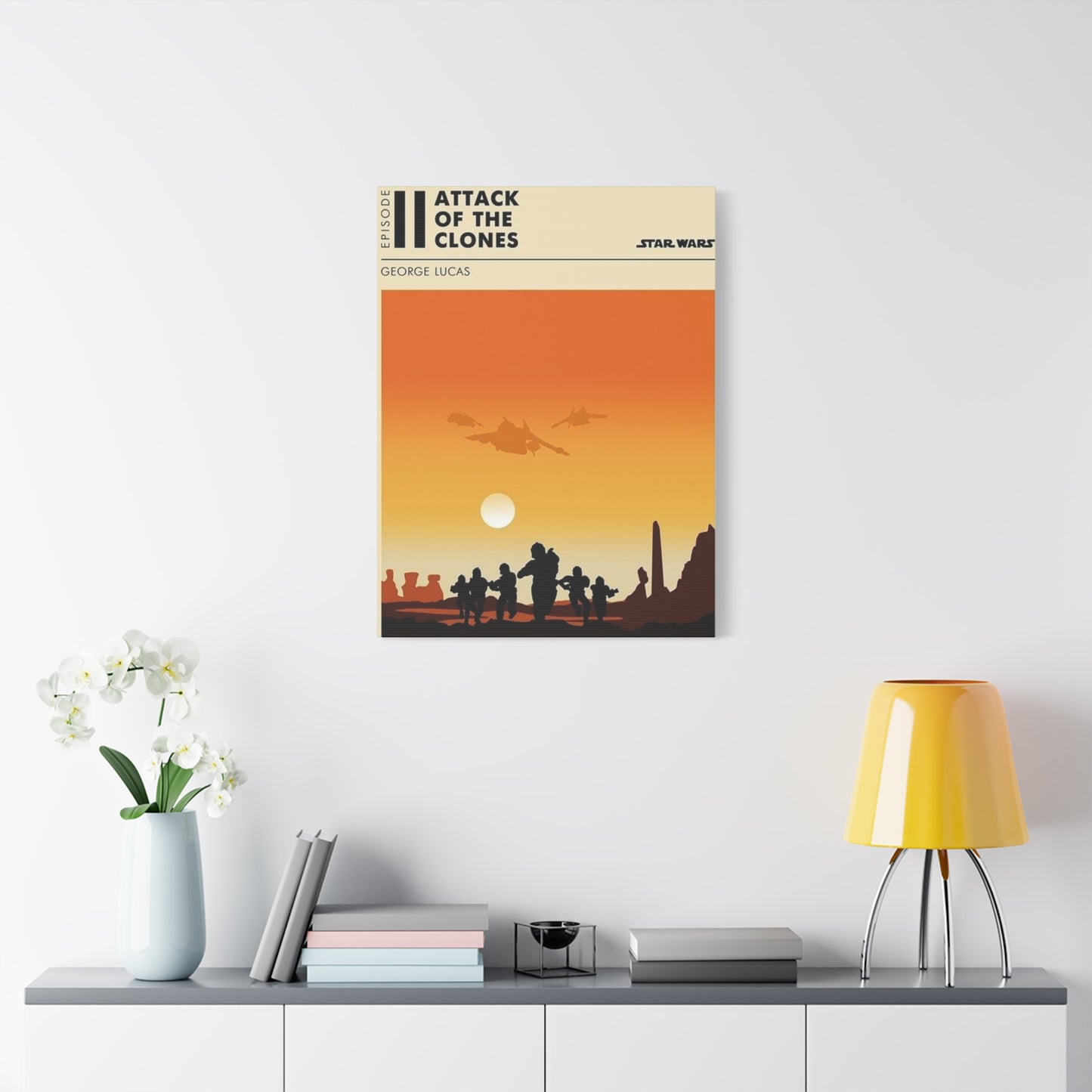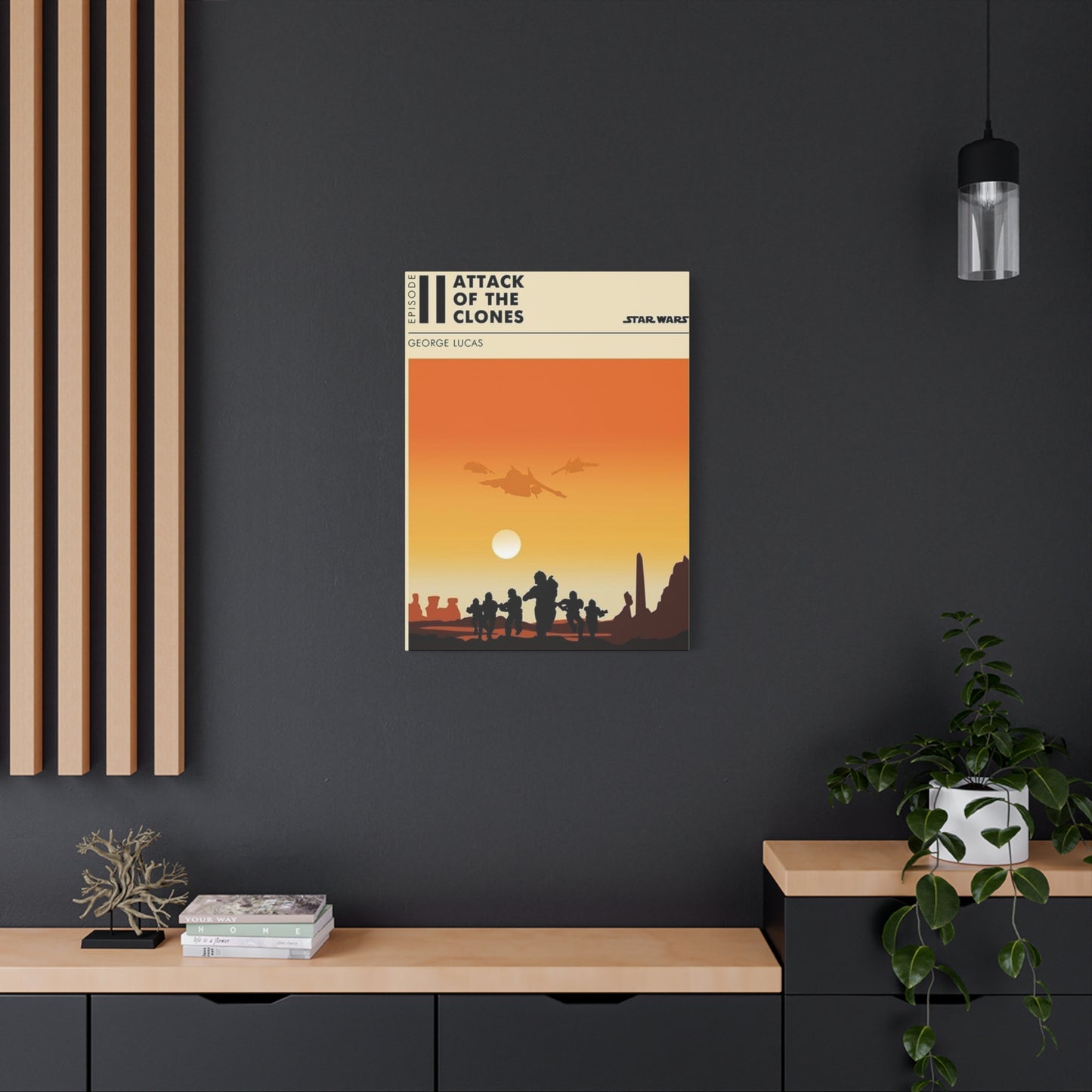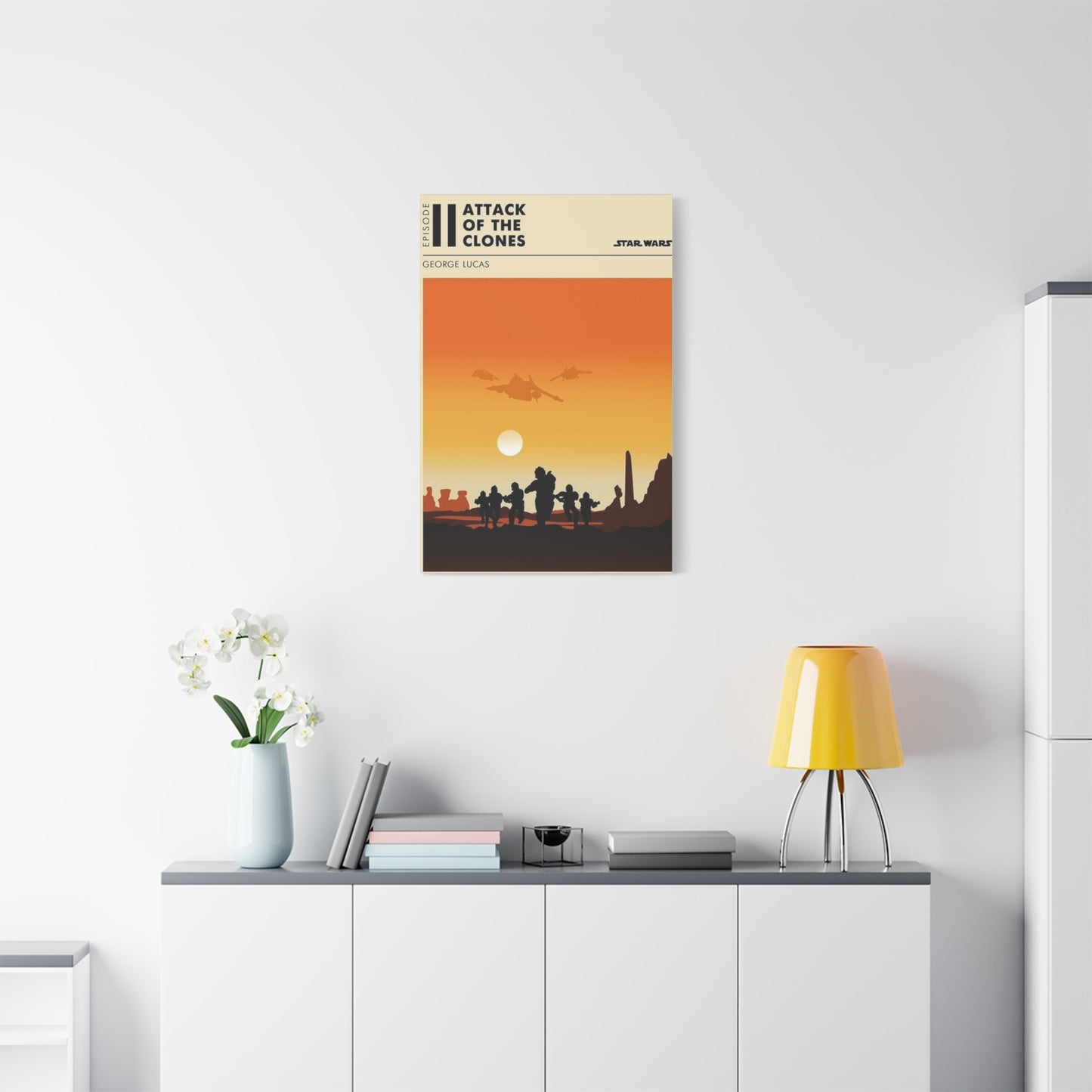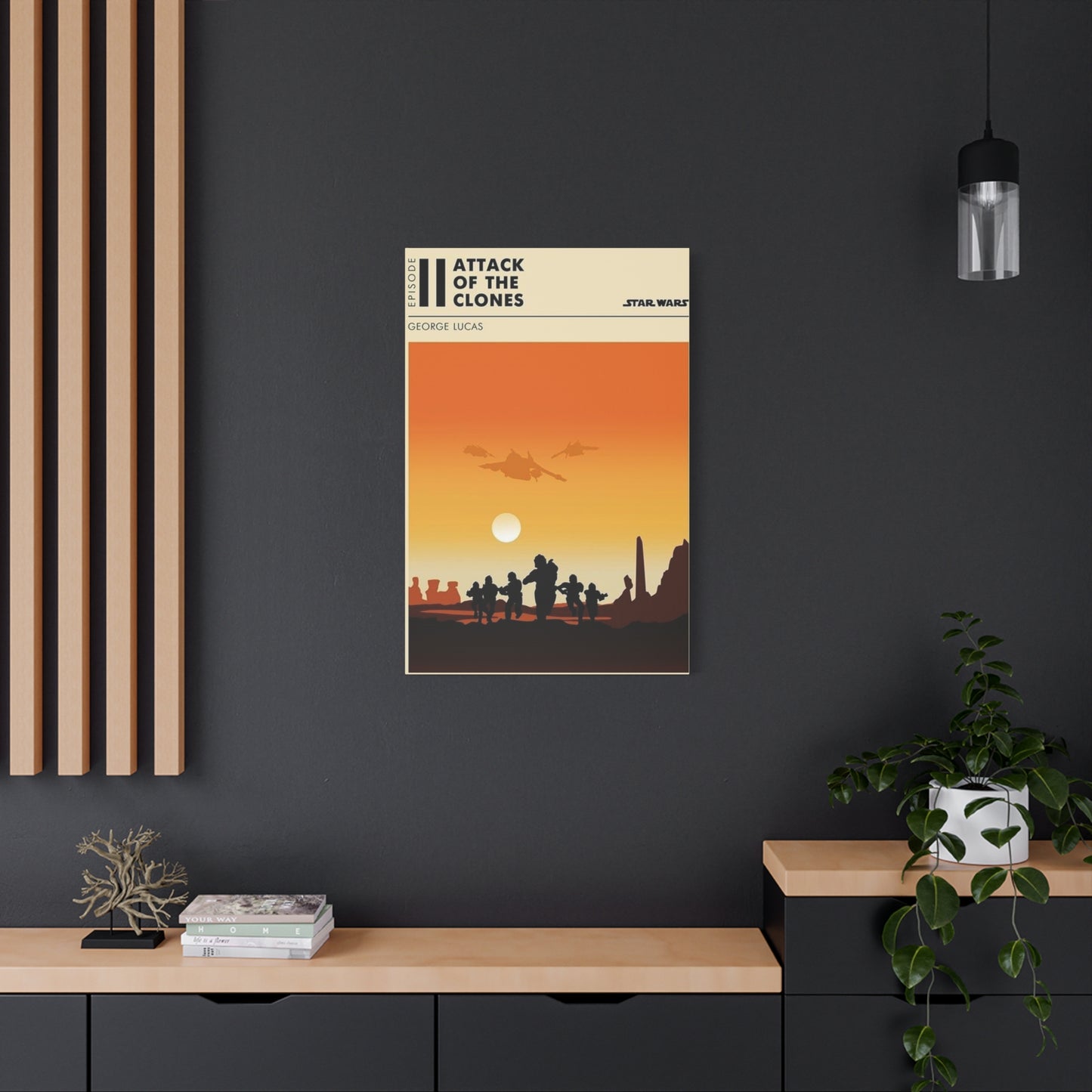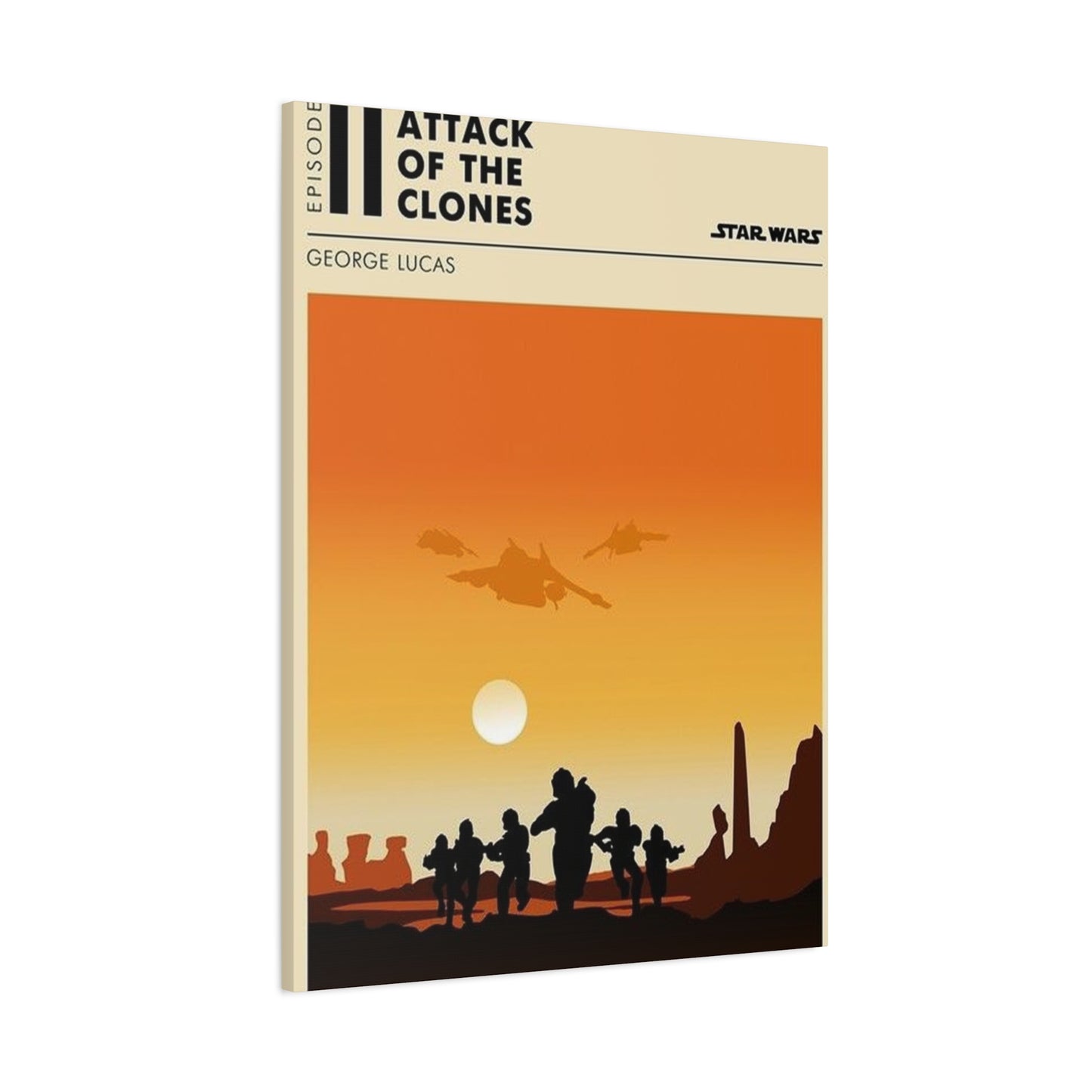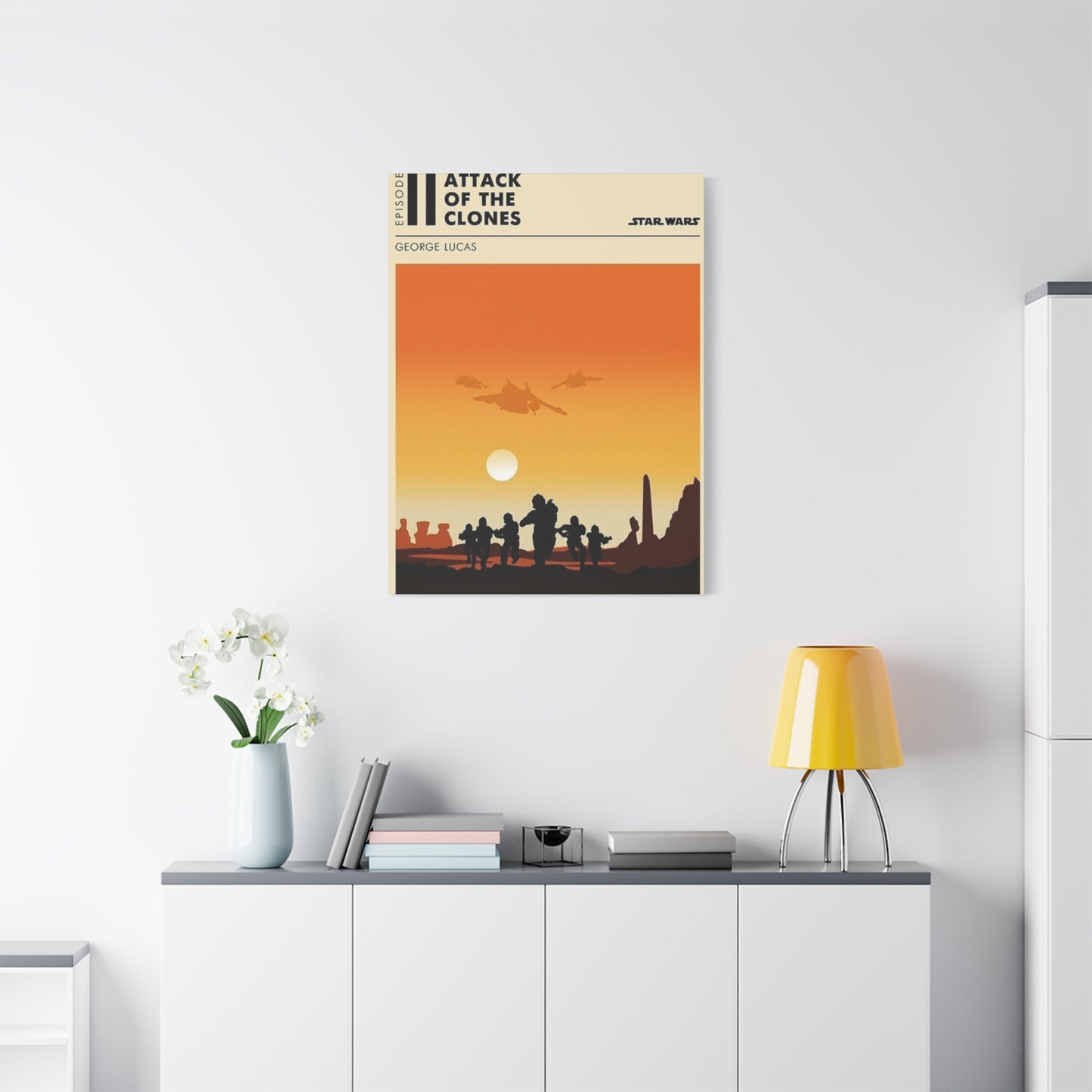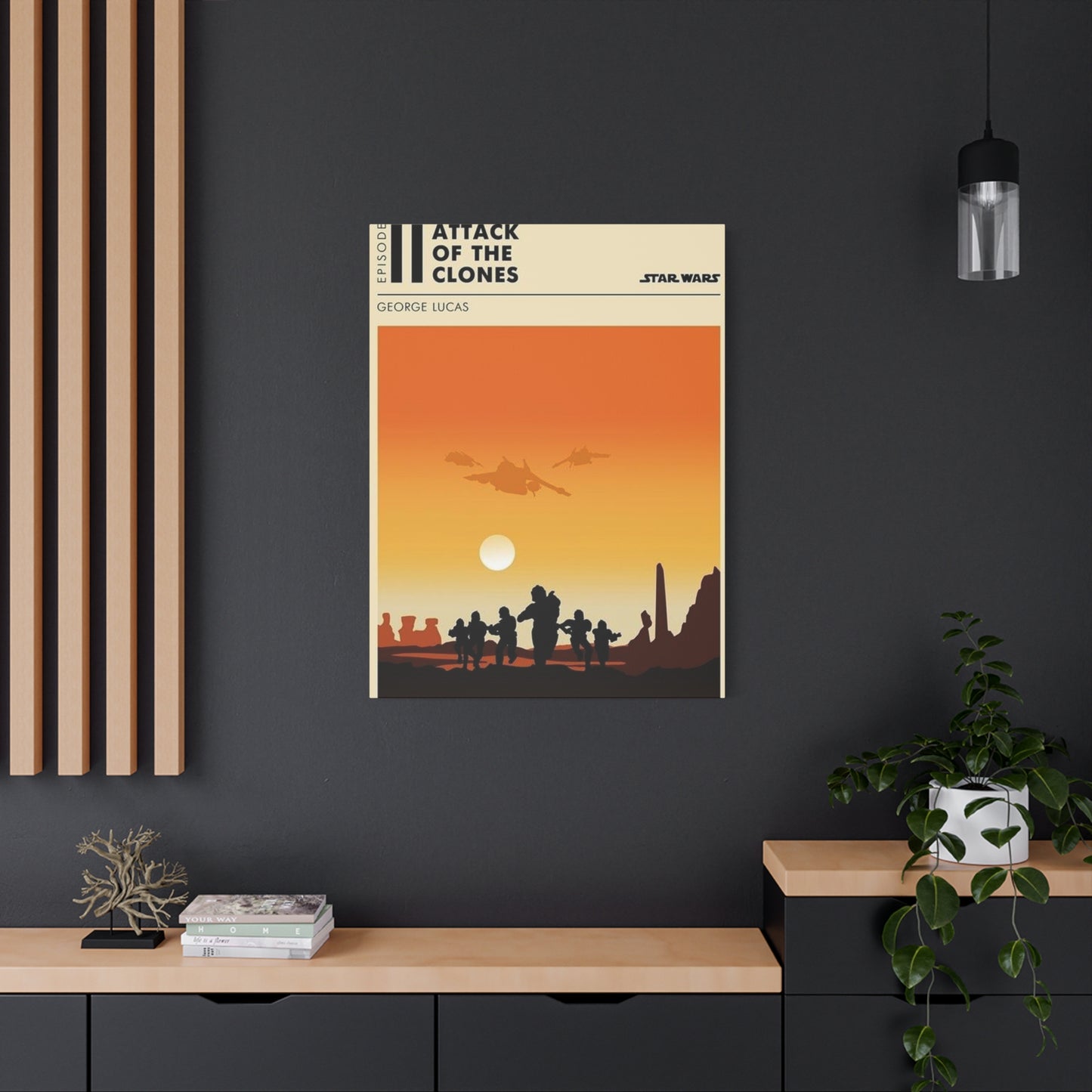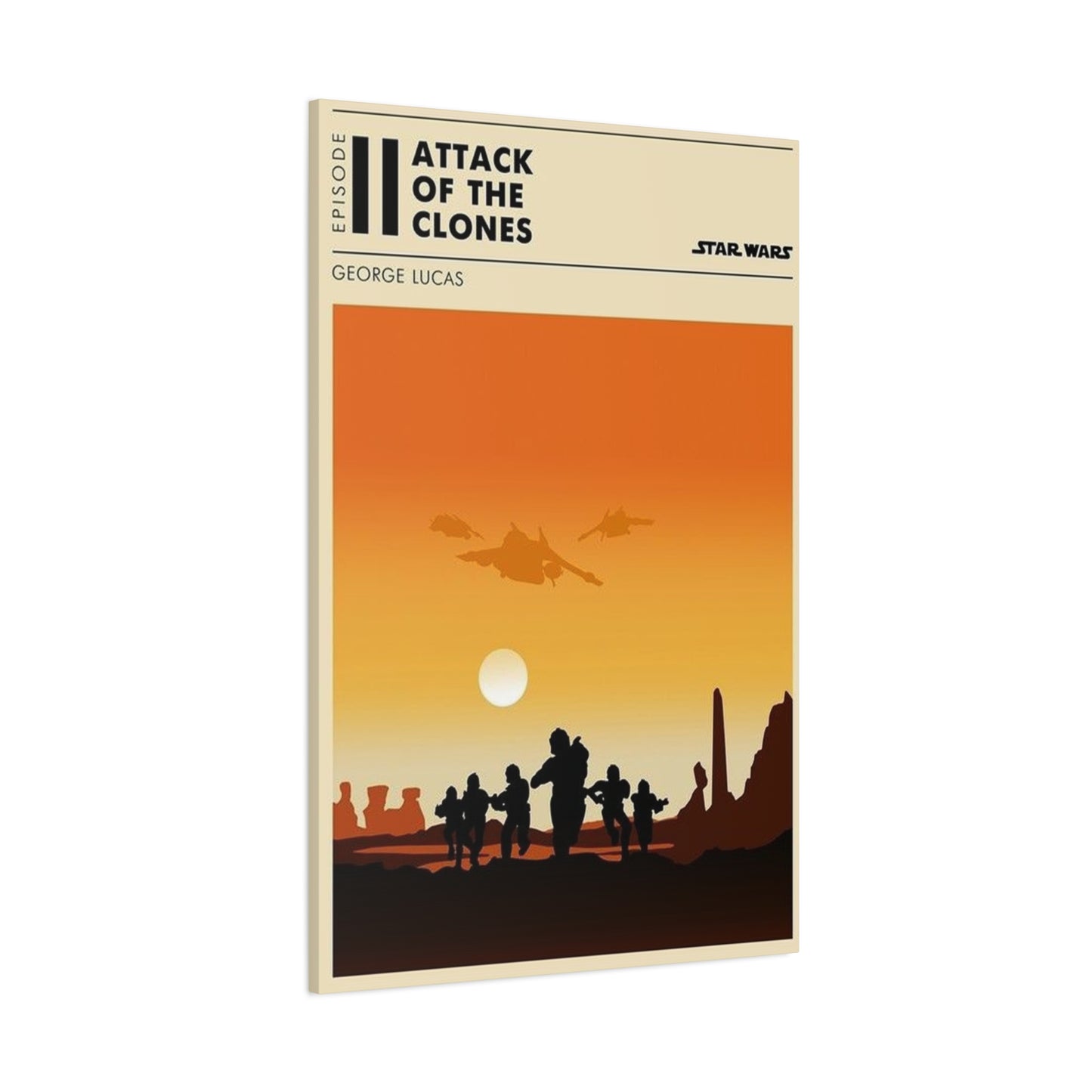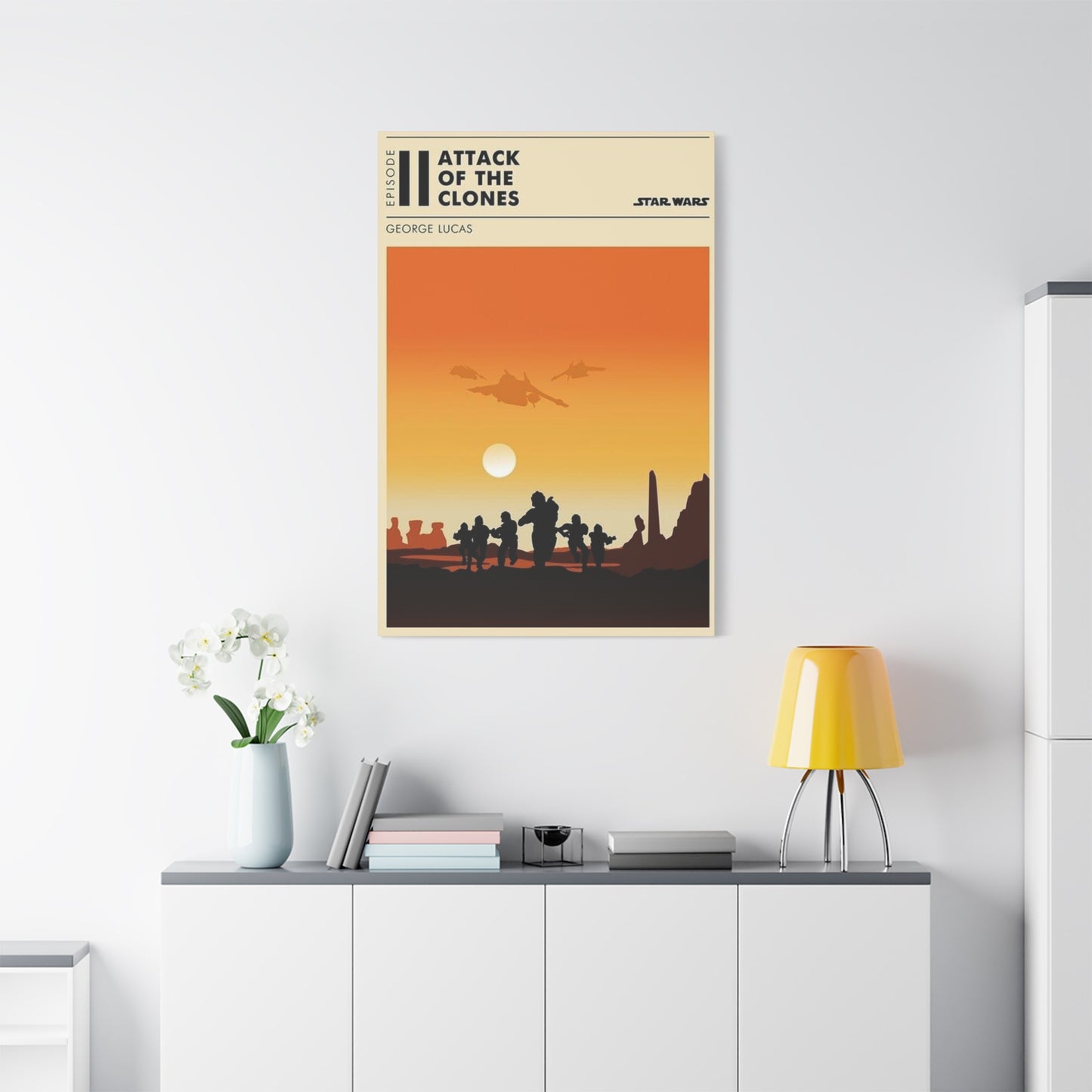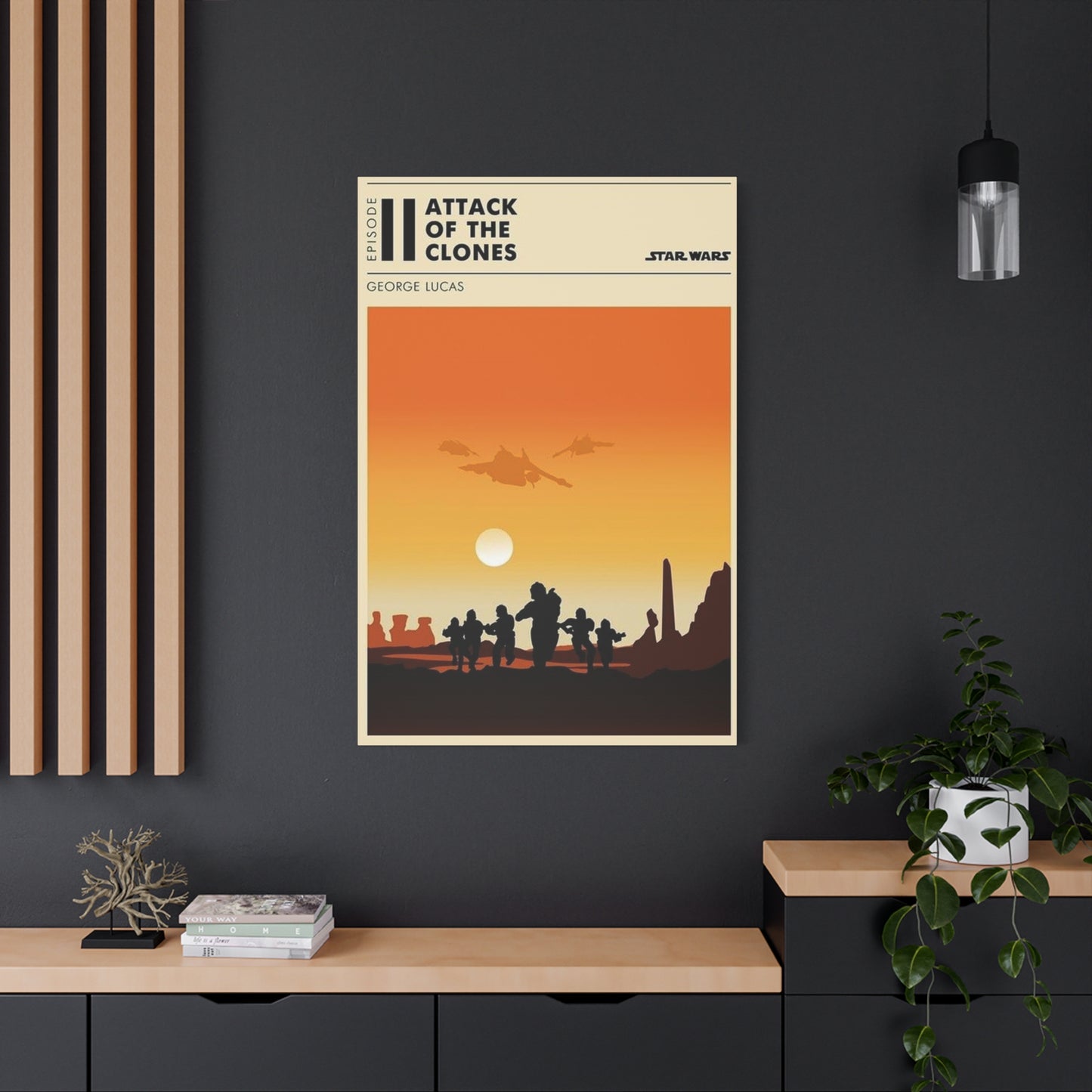Clone Wall Art: Revolutionary Artistic Expression Through Duplicated Identity
The contemporary art world has witnessed an unprecedented surge in clone-themed wall art, representing one of the most compelling artistic movements of our time. This fascinating genre explores themes of identity, duplication, and human consciousness through visual mediums that challenge traditional artistic boundaries. Clone wall art encompasses everything from abstract interpretations of multiplicity to hyperrealistic depictions of duplicated beings, creating a rich tapestry of artistic expression that resonates with modern audiences seeking deeper meaning in their living spaces.
Artists working within this genre draw inspiration from scientific advances in cloning technology, philosophical questions about identity and consciousness, and cultural anxieties about authenticity in an increasingly digital world. The resulting artworks serve not merely as decorative elements but as profound statements about what it means to be human in an age of technological reproduction. These pieces invite viewers to contemplate fundamental questions about uniqueness, originality, and the nature of self while providing striking visual impact that transforms any interior space.
The evolution of clone wall art reflects broader cultural shifts toward questioning established norms about identity and authenticity. As society grapples with advances in genetic engineering, artificial intelligence, and digital reproduction, artists have responded by creating works that visualize these complex themes through accessible yet thought-provoking imagery. This artistic movement represents more than aesthetic choice; it embodies a cultural moment where traditional concepts of individuality meet cutting-edge scientific possibilities.
Contemporary collectors and interior designers increasingly recognize clone wall art as essential elements for creating spaces that reflect intellectual curiosity and cultural awareness. These pieces function simultaneously as conversation starters, meditation focal points, and aesthetic anchors that tie together modern interior design schemes. The versatility of clone-themed artwork allows for integration into various design styles, from minimalist modernism to eclectic maximalism, making it accessible to diverse aesthetic preferences while maintaining its conceptual integrity.
The commercial success of clone wall art reflects growing public fascination with themes of duplication and identity. Art galleries, online marketplaces, and interior design showrooms report increasing demand for pieces that explore these concepts, indicating that clone-themed artwork has moved beyond niche academic interest to mainstream cultural relevance. This shift represents a maturation of public taste toward more conceptually sophisticated art that challenges viewers while providing visual pleasure.
Conceptual Foundations of Clone Wall Art
The philosophical underpinnings of clone wall art extend far beyond surface-level fascination with duplication, reaching into fundamental questions about consciousness, identity, and what constitutes authentic existence. Artists working in this medium draw from diverse philosophical traditions, including phenomenology, existentialism, and postmodern critiques of originality, to create works that function as visual philosophy. These pieces challenge viewers to reconsider basic assumptions about selfhood and individuality while engaging with contemporary debates about technological reproduction and artificial intelligence.
Phenomenological approaches to clone art focus on the experiential aspects of encountering duplicated imagery, exploring how viewers respond emotionally and cognitively to seeing multiple versions of the same figure or form. This philosophical framework emphasizes the subjective experience of viewing clone-themed artwork, recognizing that each observer brings unique perspectives and associations to their interpretation. Artists leveraging phenomenological concepts create works that deliberately evoke uncertainty, wonder, and contemplation about the nature of perception and consciousness.
Existentialist influences in clone wall art manifest through exploration of authenticity, choice, and individual responsibility in a world where duplication becomes possible. These works often present duplicated figures in ways that emphasize their potential for autonomous action and unique experiences despite identical appearances. The existentialist framework allows artists to explore how cloned beings might develop distinct identities through their choices and experiences, challenging deterministic views of genetic identity.
Postmodern theoretical frameworks inform clone art through deconstruction of originality concepts and celebration of reproduction as a legitimate creative act. These approaches recognize that all art involves some form of copying or referencing previous works, making the distinction between original and copy increasingly meaningless. Clone-themed artwork operating within postmodern frameworks often deliberately blur boundaries between authentic and reproduced imagery, creating works that question the very foundations of artistic value based on originality.
The integration of scientific concepts into artistic practice represents another crucial foundation for clone wall art. Artists increasingly collaborate with researchers in genetics, neuroscience, and artificial intelligence to create works that accurately represent current scientific understanding while maintaining artistic integrity. This interdisciplinary approach produces artwork that functions as both aesthetic experience and educational tool, helping viewers understand complex scientific concepts through visual metaphor and symbolic representation.
Cultural anthropological perspectives contribute to clone art by examining how different societies understand concepts of identity, kinship, and individual uniqueness. Artists working from these perspectives create pieces that reflect diverse cultural attitudes toward cloning and duplication, avoiding Western-centric interpretations in favor of more globally inclusive approaches. This cultural sensitivity enriches the artistic dialogue around cloning by incorporating diverse worldviews and traditional knowledge systems.
Abstract Representations of Duplicated Identity
Abstract clone wall prints represent perhaps the most conceptually sophisticated approach to exploring themes of duplication and multiplicity in contemporary art. These works move beyond literal representation to capture the essence of cloning through color, form, texture, and composition, creating pieces that resonate emotionally and intellectually without relying on recognizable imagery. Abstract approaches to clone art allow artists to explore the psychological and spiritual dimensions of duplication while maintaining aesthetic appeal that integrates seamlessly into modern interior design.
Color theory plays a crucial role in abstract clone artwork, with artists employing various strategies to suggest duplication through chromatic relationships. Some pieces utilize identical color blocks repeated across the canvas with subtle variations in saturation or brightness, creating visual rhythms that suggest both sameness and difference. Other works employ complementary color schemes where duplicated forms appear in contrasting hues, emphasizing the potential for cloned entities to develop distinct characteristics despite identical origins.
Compositional techniques in abstract clone art often involve mathematical patterns, fractals, and geometric progressions that suggest infinite reproduction possibilities. These works might feature repeating shapes that gradually change size, orientation, or density across the canvas, creating visual narratives about growth, development, and differentiation within duplicated systems. The mathematical precision of these compositions appeals to viewers who appreciate both artistic beauty and intellectual rigor.
Texture becomes a powerful tool for abstract clone artists seeking to explore themes of authenticity and artificial reproduction. Works might juxtapose smooth, machine-like surfaces with organic, hand-painted textures to suggest tensions between natural and artificial creation. Some pieces incorporate multiple identical textures applied through different techniques, creating subtle variations that speak to the impossibility of perfect duplication even in artificial systems.
Scale manipulation in abstract clone artwork creates powerful psychological effects by suggesting vastness of duplication possibilities or intimate examination of cellular-level reproduction. Large-scale works might feature tiny repeated elements that become visible only upon close inspection, while smaller pieces might contain bold repeated forms that dominate the visual field. These scale choices influence how viewers experience the artwork and what aspects of cloning they contemplate.
The integration of digital printing techniques with traditional painting methods allows abstract clone artists to explore themes of technological and natural reproduction within single works. Pieces might feature digitally printed repeated elements combined with hand-painted variations, creating visual dialogue between mechanical precision and human interpretation. This hybrid approach reflects contemporary reality where technological and natural reproduction increasingly intersect.
Symbolic abstraction in clone art often incorporates archetypal imagery such as cellular divisions, mirror reflections, and shadow formations to suggest duplication without literal representation. These works tap into universal human experiences of seeing double images or encountering identical twins, creating emotional connections that transcend cultural boundaries. The symbolic approach allows viewers to project their own associations and concerns onto the artwork while engaging with broader themes about identity and authenticity.
Pop Culture Integration in Clone-Themed Artwork
The intersection of pop culture and clone-themed artwork has produced some of the most accessible and commercially successful pieces in this artistic genre, bridging the gap between high art concepts and popular entertainment references. Artists working in this space draw inspiration from science fiction films, television series, comic books, and video games that have explored cloning themes, creating works that resonate with audiences already familiar with these cultural touchstones while adding sophisticated artistic interpretation.
Science fiction cinema provides rich source material for pop culture clone art, with iconic films having established visual languages for depicting cloned beings. Artists reference these established aesthetic conventions while adding personal interpretation and contemporary relevance, creating works that function as both entertainment and cultural commentary. The familiarity of these references makes the artwork immediately accessible to viewers while the artistic treatment elevates the material beyond simple fan art.
Television series exploring cloning themes have contributed significantly to popular understanding of duplication concepts, providing artists with narrative frameworks for their visual explorations. Artists might reference specific shows while creating original compositions that explore similar themes through different visual approaches. This referential strategy allows creators to tap into existing audience engagement while contributing new perspectives to ongoing cultural conversations about identity and authenticity.
Comic book aesthetics influence pop culture clone art through bold color schemes, dynamic compositions, and graphic design elements that emphasize visual impact over subtle nuance. These approaches make clone-themed artwork particularly effective in contemporary interior design schemes that favor strong visual statements. The comic book influence also connects clone art to broader traditions of sequential narrative art, suggesting stories and character development beyond single images.
Video game references in clone art often incorporate pixel aesthetics, digital glitch effects, and interactive design elements that acknowledge gaming as a major cultural force in contemporary society. These works might feature retro gaming color palettes or incorporate elements that suggest player choice and character customization, themes directly relevant to questions about identity formation and personal agency in cloned beings.
Celebrity culture provides another rich vein for pop culture clone art, with artists creating pieces that imagine duplicated public figures or explore themes of image reproduction and media manipulation. These works often comment on how contemporary celebrity culture already involves forms of identity multiplication through social media, publicity campaigns, and brand management. The celebrity angle makes clone art relevant to broader cultural concerns about authenticity and image manipulation.
Music industry references appear in clone art through visual interpretations of band names, album concepts, and performance aesthetics that have explored duplication themes. Artists might create visual responses to musical works that have examined identity and authenticity, establishing creative dialogue between different artistic mediums. This cross-pollination enriches both musical and visual art by creating new interpretive possibilities.
Fashion and design references in pop culture clone art acknowledge how contemporary style culture already embraces concepts of duplication through mass production, trend replication, and brand copying. Artists working in this area might explore how fashion choices contribute to identity formation and how cloned beings might navigate questions of personal style and cultural belonging through clothing and aesthetic choices.
Surrealist Approaches to Clone Imagery
Surrealist interpretations of clone themes represent some of the most psychologically compelling and visually striking works in contemporary clone wall art, drawing from the movement's traditional emphasis on unconscious expression, dream imagery, and psychological exploration to create pieces that probe the deepest implications of human duplication. These works move beyond surface-level representation to explore the surreal psychological landscape that cloning creates, offering viewers entry points into subconscious fears, desires, and fantasies about identity and reproduction.
Dream logic plays a central role in surrealist clone art, with artists creating compositions that follow the non-linear, associative patterns characteristic of dream experiences. These works might feature duplicated figures appearing in impossible architectural spaces, interacting in ways that defy physical laws, or transforming between different states of existence. The dream-like quality of these pieces allows viewers to engage with cloning concepts through intuitive and emotional responses rather than purely intellectual analysis.
Psychological symbolism in surrealist clone art often incorporates Freudian and Jungian concepts about identity formation, shadow selves, and unconscious desires. Artists might depict cloned figures as psychological doubles representing repressed aspects of personality or unfulfilled potential. These symbolic approaches allow viewers to explore personal psychological themes through the metaphor of cloning while engaging with the artwork's aesthetic qualities.
Metamorphosis imagery appears frequently in surrealist clone art, showing duplicated beings in various stages of transformation or development. These works explore questions about whether clones would undergo identical developmental processes or might evolve in unique directions based on environmental influences and individual choices. The transformation theme connects to broader surrealist interests in change, growth, and the fluid nature of identity.
Impossible architecture and spatial relationships in surrealist clone art create environments where duplicated beings exist in spaces that couldn't exist in physical reality. These architectural fantasies might feature infinite corridors lined with identical figures, mirror-like spaces that create endless reflections, or gravity-defying environments where clones move through space in impossible ways. The architectural impossibility emphasizes the fantastical nature of cloning while creating visually compelling compositions.
Time distortion appears in surrealist clone art through depictions of duplicated beings at different life stages existing simultaneously, or showing the cloning process itself as a temporal loop or spiral. These temporal manipulations explore philosophical questions about whether clones would experience time differently than naturally born individuals and whether they might have access to memories or experiences from their genetic originals.
Hybrid imagery combining human and non-human elements appears in surrealist clone art to explore questions about the boundaries of human identity and whether cloning might lead to new forms of being that transcend traditional categories. These works might show cloned figures merging with machines, plants, or abstract forms, suggesting evolutionary possibilities that cloning technology might enable.
Collective unconscious themes in surrealist clone art tap into universal human concerns about identity, death, and immortality by presenting cloning as a response to fundamental existential anxieties. These works often incorporate archetypal imagery such as birth, death, and rebirth cycles, connecting individual concerns about cloning to broader human experiences of mortality and continuity.
Minimalist Design Philosophy in Clone Art
Minimalist approaches to clone wall art demonstrate how powerful artistic statements about duplication and identity can emerge from careful reduction of visual elements to essential components, creating works that achieve maximum conceptual impact through deliberate simplicity. These pieces challenge the assumption that complex themes require complex visual treatment, instead utilizing clean lines, limited color palettes, and precise composition to explore profound questions about authenticity, repetition, and individual uniqueness.
Geometric precision characterizes many minimalist clone artworks, with artists employing mathematical relationships and systematic repetition to suggest the scientific precision involved in cloning processes. These works might feature identical geometric forms arranged in grids, progressions, or other systematic patterns that imply mechanical reproduction while maintaining aesthetic appeal through careful attention to proportion, spacing, and visual balance.
Color limitation in minimalist clone art often involves monochromatic or dichromatic schemes that emphasize form and composition over chromatic variety. Artists might use identical colors with subtle variations in tone or saturation to suggest both sameness and difference within duplicated elements. The restraint in color choice focuses viewer attention on compositional relationships and conceptual content rather than sensory stimulation.
Spatial relationship exploration in minimalist clone art examines how identical elements interact when placed in different configurations, suggesting how cloned beings might relate to each other and develop unique identities despite identical origins. These works often feature repeated forms with varying spatial relationships, creating visual narratives about independence, connection, and individual development within duplicated systems.
Material honesty in minimalist clone art emphasizes the physical properties of the medium itself, avoiding illusionistic techniques in favor of direct engagement with canvas, paint, or digital media characteristics. This approach connects to broader minimalist philosophy while adding conceptual layers related to authenticity and artificial reproduction that resonate with cloning themes.
Negative space utilization in minimalist clone artworks often proves as important as positive elements, with empty areas creating breathing room that allows viewers to contemplate the implications of duplicated elements. The careful balance between filled and empty space suggests questions about what defines individual identity and whether empty space between clones might represent potential for unique development.
Systematic repetition in minimalist clone art might involve identical elements repeated according to predetermined rules or mathematical progressions, creating works that suggest both mechanical precision and organic growth patterns. These systematic approaches reflect the scientific methodology behind cloning while creating aesthetically pleasing compositions that work effectively in contemporary interior design contexts.
Conceptual clarity in minimalist clone art emerges from the removal of unnecessary visual elements that might distract from core themes about duplication and identity. These works often achieve immediate visual impact while revealing additional layers of meaning upon extended contemplation, making them effective both as decorative elements and as subjects for deeper reflection.
Scientific Visualization in Clone-Themed Art
The intersection of scientific accuracy and artistic expression in clone-themed wall art has produced a fascinating subset of works that serve simultaneously as educational tools and aesthetic objects, helping viewers understand complex biological processes while providing visually compelling imagery for contemporary interiors. Artists working in this area often collaborate with researchers in genetics, molecular biology, and related fields to ensure that their representations reflect current scientific understanding while maintaining artistic integrity and visual appeal.
Cellular division imagery appears prominently in scientifically informed clone art, with artists creating detailed representations of mitosis, meiosis, and other reproductive processes that form the biological foundation for cloning technology. These works often feature magnified cellular structures rendered in striking color schemes that emphasize the beauty inherent in biological processes while educating viewers about the mechanical aspects of genetic reproduction.
DNA visualization in clone art represents genetic information through abstract patterns, color coding systems, and geometric arrangements that make complex molecular structures accessible to general audiences. Artists might create works that show identical DNA sequences in different visual contexts, suggesting how identical genetic information might express differently depending on environmental factors and developmental influences.
Laboratory equipment and scientific apparatus appear in clone art as symbolic elements representing human intervention in natural reproductive processes. These works might feature stylized depictions of petri dishes, microscopes, centrifuges, and other tools used in cloning research, creating compositions that acknowledge the technological mediation required for artificial reproduction while maintaining aesthetic appeal.
Microscopic imagery in scientific clone art often reveals the hidden beauty of cellular structures, molecular formations, and genetic material that remain invisible to casual observation. Artists working with high-powered microscopy create works that function as windows into normally inaccessible biological realms while raising questions about the relationship between natural beauty and scientific manipulation.
Temporal progression documentation in scientific clone art might show the stages of cloning processes from initial genetic extraction through full organism development, creating narrative sequences that educate viewers about the complexity and time requirements of actual cloning procedures. These educational approaches help demystify cloning technology while creating visually interesting compositions.
Comparative anatomy studies in clone art explore how identical genetic information might express differently in various environmental contexts, showing duplicated organisms with subtle variations that reflect epigenetic influences and developmental plasticity. These works emphasize the complexity of genetic expression while challenging simplistic notions of genetic determinism.
Data visualization techniques in scientific clone art transform research findings, statistical analyses, and experimental results into visually compelling formats that make scientific information accessible to non-specialist audiences. These works might feature charts, graphs, and infographic elements integrated into artistic compositions that maintain both educational value and aesthetic appeal.
Digital Innovation in Clone Wall Prints
Digital technology has revolutionized clone-themed wall art by providing artists with unprecedented tools for creating, manipulating, and reproducing imagery that explores themes of duplication and artificial reproduction, while simultaneously raising questions about authenticity and originality that directly parallel concerns about biological cloning. Digital clone art represents a perfect marriage of medium and message, utilizing technological reproduction methods to explore conceptual territories related to genetic reproduction.
Algorithmic generation in digital clone art involves computer programs that create repeated elements with systematic variations, producing works that suggest both mechanical precision and organic diversity. Artists might design algorithms that generate thousands of slightly different versions of the same base form, creating compositions that visualize the potential for variation within duplicated systems while demonstrating how digital technology can automate creative processes.
Glitch aesthetics in digital clone art deliberately incorporate digital errors, pixelation, and data corruption to suggest the imperfections and unexpected variations that might occur in biological cloning processes. These works acknowledge that perfect duplication remains impossible even with advanced technology, using digital artifacts as metaphors for the biological variations that distinguish clones from their genetic originals.
Parametric design systems in digital clone art allow artists to create works where repeated elements follow complex mathematical relationships and respond to input variables in systematic ways. These approaches produce compositions that change and evolve according to predetermined rules while maintaining visual coherence, suggesting how cloned organisms might develop along similar but not identical pathways.
Motion graphics and animated clone art explore temporal dimensions of duplication by showing repeated elements moving, transforming, or interacting in ways that static images cannot achieve. These animated works might visualize cellular division processes, show identical figures moving through different developmental pathways, or demonstrate how duplicated elements might evolve over time.
Interactive digital clone art allows viewers to manipulate repeated elements, change variables affecting duplicated forms, or explore different scenarios for clone development through user input. These interactive approaches transform viewers from passive observers to active participants in exploring cloning concepts while demonstrating how digital technology can create personalized artistic experiences.
Machine learning integration in digital clone art involves artificial intelligence systems that analyze existing artwork and generate new variations, creating pieces that demonstrate how machines might interpret and reproduce creative expressions. These works raise questions about creativity, authorship, and authenticity that parallel debates about biological cloning and genetic identity.
Virtual and augmented reality applications in clone art create immersive experiences where viewers can encounter duplicated beings in three-dimensional environments, walk through spaces populated by clones, or experience what it might feel like to be surrounded by identical versions of themselves. These immersive technologies expand the possibilities for clone art beyond traditional wall-mounted formats.
Contemporary Identity Exploration Through Clone Art
Contemporary clone wall art serves as a powerful medium for exploring complex questions about personal and cultural identity in an era marked by rapid technological advancement, social media proliferation, and increasing global connectivity that have fundamentally altered how individuals understand themselves and their relationships to others. These artworks provide visual frameworks for examining how cloning technology might interact with existing identity formation processes while addressing broader cultural anxieties about authenticity and uniqueness.
Social media influence on identity formation appears in contemporary clone art through works that explore how digital self-representation creates multiple versions of individual identity across different platforms and contexts. Artists might create pieces showing identical figures engaged in different activities or presenting different personas, suggesting how contemporary life already involves forms of identity multiplication that precede biological cloning.
Cultural heritage preservation themes in clone art examine how genetic duplication might affect the transmission of cultural knowledge, traditions, and ethnic identity across generations. These works often explore whether clones would inherit cultural affiliations along with genetic information or would need to actively construct cultural identity through learning and choice, raising questions about the relationship between nature and nurture in cultural belonging.
Gender and sexuality exploration in contemporary clone art addresses how duplication technology might interact with evolving understanding of gender identity, sexual orientation, and reproductive autonomy. Artists working in this area might create works that show cloned beings exploring different gender expressions or suggest how cloning might expand reproductive possibilities for LGBTQ+ individuals and couples.
Neurodiversity representation in clone art explores how genetic duplication might affect neurological development and cognitive diversity, creating works that celebrate different forms of thinking and perceiving while questioning whether clones would necessarily share cognitive characteristics with their genetic originals. These works often emphasize the value of neurological diversity while exploring how cloning might impact it.
Generational conflict themes appear in clone art through works that imagine relationships between genetic originals and their clones, exploring potential tensions around autonomy, expectations, and identity formation. These pieces often draw parallels between clone-original relationships and traditional parent-child dynamics while highlighting unique aspects of genetic duplication scenarios.
Professional and career identity exploration in clone art addresses how duplicated beings might navigate questions of individual achievement, professional recognition, and personal accomplishment in careers where identity and reputation play important roles. These works might explore whether clones could inherit professional reputations or would need to establish independent career identities.
Spiritual and religious identity themes in contemporary clone art examine how different faith traditions might understand cloned beings and whether duplication technology would affect spiritual development or religious belonging. Artists working in this area often create works that respect diverse religious perspectives while exploring how cloning might challenge or enrich spiritual understanding.
Futuristic Aesthetics in Clone Canvas Art
Futuristic approaches to clone canvas art envision how duplication themes might evolve in hypothetical future societies where cloning technology has become commonplace, creating works that combine speculative design, science fiction aesthetics, and contemporary artistic techniques to produce pieces that function as both art objects and cultural prophecies about humanity's technological trajectory. These works challenge viewers to imagine alternative futures while providing striking visual elements for forward-thinking interior design schemes.
Cyberpunk influences in futuristic clone art often feature neon color schemes, urban decay imagery, and technological integration that suggests dystopian futures where cloning has become commercialized and regulated by corporate interests. These works might show cloned beings in technological environments, connected to digital networks, or modified with cybernetic enhancements that blur boundaries between natural and artificial existence.
Space age aesthetics in clone art imagine how duplication technology might function in extraterrestrial environments, creating works that show cloned beings adapted for life on other planets or in artificial space habitats. These pieces often incorporate cosmic imagery, unusual lighting effects, and alien landscape elements that suggest how human identity might evolve in non-terrestrial contexts.
Biotechnology integration themes in futuristic clone art explore how genetic duplication might combine with other emerging technologies such as genetic engineering, nanotechnology, and artificial intelligence to create new forms of enhanced humanity. These works might feature cloned beings with visible technological modifications, unusual sensory capabilities, or extended lifespans that reflect speculative biotechnology developments.
Post-human evolution concepts in futuristic clone art imagine how duplication technology might contribute to human species development, creating works that show cloned beings with enhanced abilities, adapted physiologies, or novel forms of consciousness. These evolutionary themes connect to broader transhumanist concepts while maintaining accessibility through visual metaphor and artistic interpretation.
Environmental adaptation themes in futuristic clone art explore how duplication technology might help humanity adapt to climate change, resource scarcity, and other environmental challenges by creating specialized populations adapted for different conditions. These works might show clones adapted for underwater living, extreme temperatures, or high-radiation environments, suggesting hopeful applications for cloning technology.
Social structure speculation in futuristic clone art imagines how clone-inclusive societies might organize themselves, addressing questions about clone rights, social hierarchies, and cultural integration in hypothetical future communities. These works often feature complex compositions showing diverse populations including both naturally born and cloned individuals in various social contexts.
Technological singularity themes in futuristic clone art explore how duplication technology might interact with artificial intelligence development, creating works that suggest convergence between biological and digital reproduction methods. These pieces might feature cloned beings interfacing with AI systems or suggest scenarios where biological and digital duplication become indistinguishable processes.
Art Interpretations of Cloning
Pop art approaches to clone wall imagery draw from the movement's traditional emphasis on mass production, commercial aesthetics, and cultural commentary to create works that address duplication themes through familiar visual languages derived from advertising, consumer products, and popular media, making complex cloning concepts accessible through immediately recognizable artistic styles that have shaped contemporary visual culture for decades.
Commercial advertising parody in pop art clone works often mimics the visual strategies of product marketing to create satirical commentary about potential commercialization of cloning technology. These pieces might feature repeated figures presented like product advertisements, complete with marketing slogans, brand logos, and consumer appeal techniques that suggest how human duplication might be packaged and sold in capitalist societies.
Mass production aesthetics in pop clone art employ techniques associated with industrial manufacturing, such as screen printing, mechanical repetition, and standardized color schemes, to create works that visually echo the systematic reproduction involved in both commercial production and biological cloning. These approaches emphasize the mechanical aspects of duplication while creating visually striking compositions.
Celebrity culture commentary in pop art clone works explores how contemporary fame culture already involves forms of identity multiplication through media representation, brand management, and public persona development. Artists might create works featuring repeated celebrity images or suggest how cloning technology might affect fame, authenticity, and public image in entertainment industries.
Consumer product integration in pop clone art incorporates familiar commercial imagery, packaging design, and brand aesthetics to explore how cloning might be integrated into consumer culture. These works might present cloned beings as products, show clones using consumer goods, or parody product advertising through clone-themed compositions that comment on commodification of human identity.
Color field techniques borrowed from pop art tradition appear in clone-themed works through bold, saturated color schemes that emphasize visual impact over subtle nuance. These chromatic approaches make clone art accessible to viewers who might find purely conceptual approaches intimidating while maintaining sophisticated commentary about duplication and identity themes.
Graphic design elements from pop art, including Ben-Day dots, bold typography, and comic book aesthetics, appear in clone-themed works to create immediate visual recognition while adding layers of cultural commentary about how visual reproduction techniques parallel biological duplication processes. These graphic approaches connect clone art to broader traditions of mechanical reproduction in visual culture.
Irony and humor in pop art clone works often employ comedic strategies to make serious themes about identity and reproduction more approachable, creating pieces that entertain viewers while encouraging deeper reflection about cloning implications. These humorous approaches can make clone art more accessible to general audiences while maintaining conceptual sophistication.
Conceptual Framework Development in Clone Art
Conceptual approaches to clone wall art emphasize ideas and theoretical frameworks over traditional aesthetic concerns, creating works that function primarily as vehicles for exploring philosophical, scientific, and cultural concepts related to duplication and identity while maintaining sufficient visual interest to succeed as decorative art objects in contemporary interior design contexts.
Institutional critique themes in conceptual clone art examine how existing social institutions might respond to cloning technology, creating works that question assumptions about family structures, educational systems, legal frameworks, and economic organizations in societies that include cloned individuals. These works often incorporate text, documentation, and systematic presentation methods borrowed from institutional contexts.
Process documentation in conceptual clone art might present systematic records of artistic procedures, research methodologies, or theoretical investigations rather than traditional finished art objects, creating works that emphasize the intellectual journey involved in exploring cloning concepts rather than producing aesthetically pleasing imagery. These documentary approaches connect to broader conceptual art traditions while adding contemporary relevance.
Language and linguistics exploration in conceptual clone art addresses how duplication concepts challenge existing vocabulary, grammatical structures, and communication systems, creating works that incorporate textual elements, linguistic analysis, and communication theory to explore how language might evolve to accommodate clone-inclusive societies.
Systems analysis in conceptual clone art employs diagrammatic approaches, flowcharts, and systematic mapping to visualize the complex relationships between cloning technology, individual identity, social structures, and cultural values. These analytical approaches help viewers understand the complexity of cloning implications while creating visually organized compositions.
Time-based concepts in conceptual clone art explore temporal aspects of duplication, including questions about memory inheritance, developmental timing, and lifespan synchronization between clones and genetic originals. These works might incorporate duration-based elements, temporal mapping, or historical analysis to explore how time affects cloning scenarios.
Interdisciplinary collaboration in conceptual clone art involves partnerships between artists and experts in genetics, philosophy, sociology, and other relevant fields to create works that accurately represent current knowledge while maintaining artistic integrity. These collaborative approaches produce artworks that function as both aesthetic objects and educational tools.
Audience participation elements in conceptual clone art might involve viewer surveys, interactive decision-making processes, or community input collection to explore how different people understand and respond to cloning concepts. These participatory approaches transform viewers from passive observers to active contributors in exploring cloning themes.
Duality Themes in Contemporary Clone Art
Duality concepts in clone wall art explore the fundamental tensions between sameness and difference, original and copy, natural and artificial, individual and collective that emerge from cloning scenarios, creating works that visually represent these philosophical oppositions while suggesting potential resolutions or deeper understanding through artistic interpretation and symbolic representation.
Light and shadow manipulation in duality-themed clone art often employs contrasting illumination to suggest different aspects of duplicated identity, with identical figures appearing in different lighting conditions to emphasize how environmental factors might affect perception and development despite genetic similarity. These lighting strategies create dramatic visual effects while exploring philosophical concepts about perspective and understanding.
Mirror imagery in duality clone art utilizes reflective surfaces, symmetrical compositions, and reversed orientations to explore relationships between originals and copies while questioning which version should be considered authentic. These mirror-based approaches tap into universal human experiences of self-recognition while adding conceptual layers related to genetic duplication.
Positive and negative space relationships in duality clone art employ compositional techniques that emphasize both filled and empty areas to suggest how individual identity might emerge from the interaction between genetic inheritance and environmental influence. These spatial approaches create visually balanced compositions while exploring complex theoretical concepts about identity formation.
Color temperature contrasts in duality-themed works might present identical forms in warm and cool color schemes to suggest different emotional states, developmental pathways, or environmental adaptations that could distinguish genetically identical beings. These chromatic strategies make abstract concepts accessible through immediate visual experience.
Scale variation in duality clone art presents repeated elements at different sizes to explore questions about hierarchy, importance, and development within duplicated systems. These scale relationships might suggest parent-child dynamics, evolutionary progression, or simply different perspectives on identical beings.
Textural contrasts in duality clone art juxtapose different surface treatments applied to identical forms, suggesting how experience, environment, and choice might create distinguishable characteristics even within genetically identical beings. These textural approaches appeal to tactile sensibilities while exploring theoretical concepts about identity development.
Temporal layering in duality works might show identical figures at different life stages, in different historical periods, or experiencing different rates of change to explore how time affects identity development in duplicated beings. These temporal approaches create complex compositions while addressing philosophical questions about continuity and change.
Edgy Contemporary Clone Print Collections
Edgy approaches to clone wall prints push boundaries of conventional artistic representation by incorporating provocative imagery, challenging social norms, and addressing controversial aspects of cloning technology through bold visual strategies that appeal to collectors seeking artwork that makes strong statements about contemporary social issues while providing striking focal points for progressive interior design schemes.
Dystopian scenarios in edgy clone art might present duplication technology in nightmarish contexts, showing cloned beings in oppressive environments, subjected to exploitation, or existing in dehumanizing conditions that reflect contemporary anxieties about technological advancement and social control. These dark visions serve as cautionary tales while creating visually compelling artwork that challenges comfortable assumptions.
Body modification themes in edgy clone prints explore how duplication technology might interact with contemporary practices of physical alteration, including tattoos, piercings, surgical modification, and technological implants. These works might show cloned beings with extensive modifications that distinguish them from genetic originals or explore how body modification might affect clone identity formation.
Violence and conflict imagery in edgy clone art addresses potential social tensions that might emerge from cloning technology, including discrimination, exploitation, and conflict between different human populations. These controversial themes require sensitive handling while creating powerful visual statements about social justice and human rights issues.
Sexual identity exploration in edgy clone prints might address how duplication technology could affect human sexuality, reproduction, and intimate relationships through provocative imagery that challenges conventional assumptions about sexual norms and family structures. These works often incorporate contemporary discussions about gender fluidity, reproductive autonomy, and sexual liberation.
Psychological horror elements in edgy clone art tap into fears about identity loss, authenticity, and psychological integrity through disturbing imagery that suggests the potential dark side of duplication technology. These horror-influenced works create strong emotional responses while exploring legitimate concerns about the psychological implications of cloning.
Political commentary in edgy clone prints addresses how duplication technology might affect power structures, social hierarchies, and political control through imagery that critiques existing systems while speculating about future scenarios. These politically charged works appeal to collectors who appreciate art that engages with contemporary social issues.
Environmental destruction themes in edgy clone art might present cloning as either a response to environmental collapse or a contributor to ecological problems, creating works that address climate change, resource depletion, and environmental justice through provocative imagery that demands attention to pressing contemporary concerns.
Multiplicity Concepts in Abstract Clone Wall Art
Abstract approaches to multiplicity themes in clone wall art move beyond literal representation to explore the mathematical, philosophical, and aesthetic dimensions of duplication through formal artistic strategies that emphasize repetition, variation, and systematic development while creating visually compelling compositions that function effectively in contemporary interior design contexts.
Mathematical progression themes in multiplicity art might employ geometric sequences, fractal patterns, or algorithmic generation to create works that suggest infinite duplication possibilities while maintaining visual coherence through systematic organization. These mathematical approaches appeal to viewers who appreciate both artistic beauty and intellectual rigor while exploring concepts relevant to genetic reproduction.
Cellular automation concepts in abstract clone art employ systematic rules governing how repeated elements interact, change, and develop across the composition surface, creating works that visualize how simple duplication rules might generate complex emergent behaviors. These systematic approaches reflect current understanding of biological development while creating visually fascinating patterns.
Conclusion
Clone Wall Art represents a bold exploration of identity, repetition, and contemporary artistic expression, offering a thought-provoking addition to modern interiors. By examining the concept of duplicated identity, these artworks challenge traditional notions of individuality, self-perception, and societal roles, creating a visual dialogue that engages and intrigues viewers. The use of repetition, mirrored forms, and layered compositions transforms the familiar into the extraordinary, making each piece both conceptually rich and visually striking. This type of wall art appeals to enthusiasts of modern art, conceptual design, and those seeking to provoke reflection and conversation through their décor.
Integrating Clone Wall Art into interior spaces allows homeowners and designers to create environments that are intellectually stimulating and visually dynamic. In living rooms or creative studios, these pieces serve as compelling focal points, inviting viewers to interpret meaning and explore the nuances of identity and replication. In offices, galleries, or study spaces, they can inspire critical thinking, creativity, and dialogue, while complementing minimalist, contemporary, or industrial décor styles. The versatility of clone-themed artworks ensures they enhance a variety of interiors, adding depth, sophistication, and modern edge.
The artistry behind Clone Wall Art emphasizes meticulous composition, innovative use of repetition, and expressive visual language. Artists often employ techniques such as layering, color contrast, and symmetry to convey the tension and harmony inherent in duplicated identities. Each iteration of the subject reflects subtle variations that invite deeper engagement, transforming the artwork from mere decoration into a conceptual statement that resonates on multiple levels. This careful balance of technique and theme elevates Clone Wall Art, making it an immersive experience for viewers.
Ultimately, Clone Wall Art redefines interior décor by merging conceptual depth with visual innovation. It transforms walls into spaces of reflection, creativity, and contemporary storytelling, offering both aesthetic appeal and intellectual stimulation. By featuring such artwork, individuals can express modern artistic sensibilities, celebrate the complexity of identity, and create interiors that are bold, engaging, and thought-provoking—making it a revolutionary addition to any contemporary space.




















